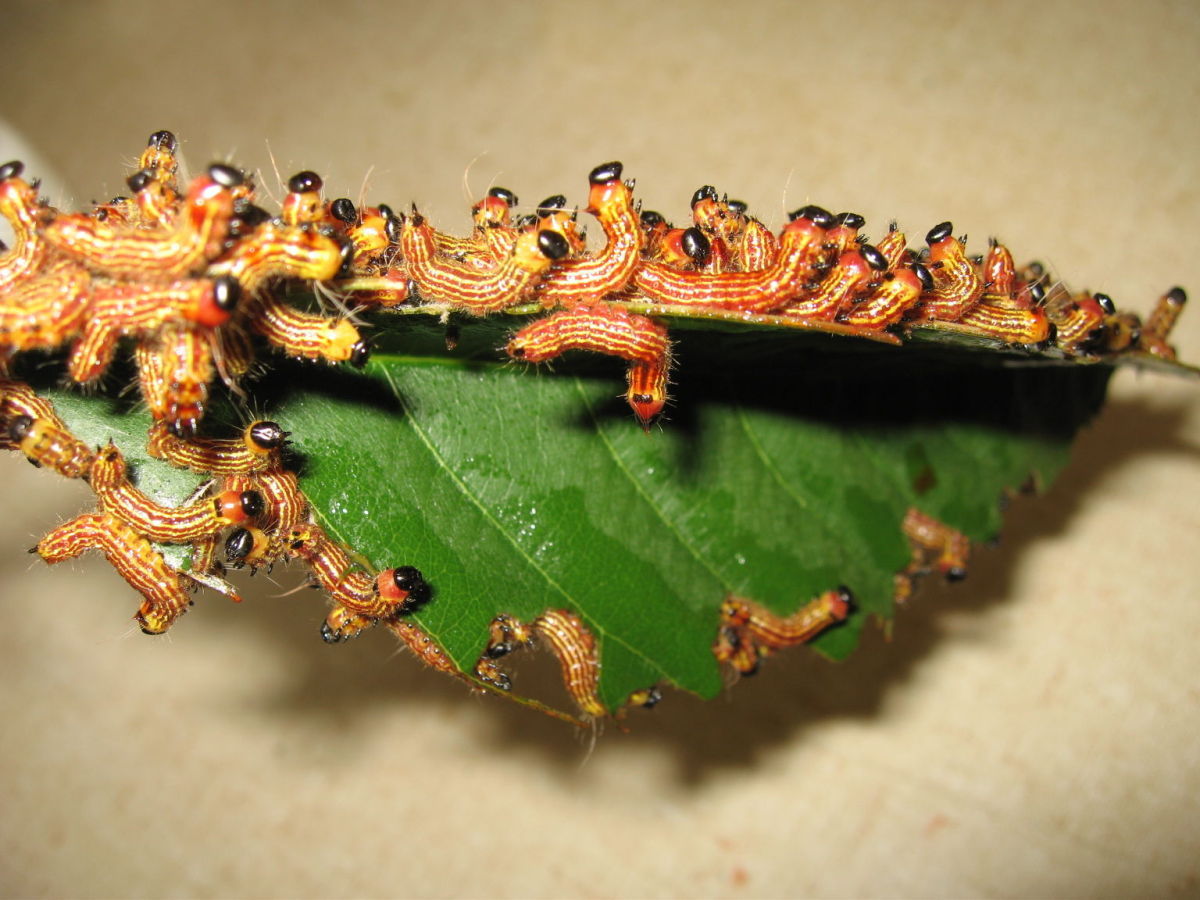Q: I keep finding fruit tree leaves with the edges eaten and lots of gray insects. Can you tell me what it is?
A: The Sri Lankan weevil, Myllocerus undatus, has been moving up from South Florida for several years. This year it seems to be everywhere in the Discovery Gardens. It especially likes to eat palms, peaches and persimmons in our gardens, but has been documented on at least 68 fruit trees, palms, ornamental plants and citrus.
The adults eat the edges of leaves and the larvae eat roots. Little is known about root damage. Large plants should not be significantly affected by adult feeding damage, but small plants and young trees may need protection.
Foliar applications of carbaryl or acephate have been shown effective for control on ornamental plants, but there are no registered pesticides for homeowner use for this pest on fruit trees. These insecticides are broad spectrum and may kill many beneficial insects if not used properly. Read and follow all instructions before use. You also can collect the insects by vigorously shaking a branch over an open, inverted umbrella and dumping the collected weevils into a container of soapy water.
Q: My papaya plant’s leaves are all turning yellow and dying. What is happening?
A: Papaya ringspot virus is the most important disease of papaya in Florida, and I suspect your plant has this disease. The first symptoms are yellow mottling and vein-clearing of the leaves. The lobes of the leaves become distorted and the leaf size will be reduced.
Symptoms are dark circles or C-shaped markings on the fruit peel. All papaya plants showing symptoms of the virus should be removed. Avoid using seed from small, pear-shaped Solo-type fruit, which are more susceptible to the virus than the larger, elongated, oval-shaped fruit.
Q: I found some caterpillars covering my pecan leaves. What can I do? They are eating all the leaves.
A: Your pecan has walnut caterpillar, Datana integerrima. These caterpillars can completely defoliate trees. The larvae feed on walnut, pecan and various hickory species.
Damage is usually on just a few trees, and epidemics can last two years, during which tree growth and vigor is reduced. Three generations of the insects can occur per year with the heaviest feeding damage usually in August.
When fully grown, the caterpillars will drop to the ground and burrow in the soil and leaf litter to pupate or overwinter. At least 13 species of parasites attack these caterpillars, but this may not be enough to control them.
For an isolated infestation, clip and destroy the leaflets with egg masses and caterpillars, remove and destroy groups of the caterpillars from tree trunks, spread a sticky barrier like tanglefoot around the tree trunk below branches and use resistant trees with fuzzy leaves when available.
Q: Do my Washingtonia Palms have Fusarium? I know this is a deadly and contagious palm disease.
A: Fusarium is a plant disease that is spread on pruning equipment. The two types of Fusarium that affect palms will kill all types of date palms, queen palms and Washingtonia palms.
The symptoms on feather-shaped leaves will show up on a few of the older leaves as half-green, half-brown leaves, divided right down the middle leaf stem.
The stem also will have a dark brown streak that can be seen all the way into the stem when you look at a cut section of the stem. Fan-shaped leaves are harder to diagnose because the browning will be in wedge-shaped areas, but the stem still will show the brown streak that extends into the stem tissue.
No cure exists for this disease. The palm should be removed as soon as possible to avoid transmission of the disease to other healthy palms. Unfortunately, when palms are over pruned, you may not see the characteristic symptoms because they only show up on older leaves, but the disease is still present. If you suspect your palm has this disease, contact the Extension Office for confirmation.


